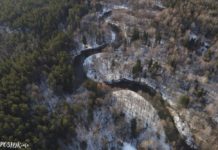Deer beetle
The stag beetle is a rather interesting and unusual insect found on the territory of Belarus. Pliny in his "natural history» named beetles lucanus, i.e. "dwelling in Lucania" - a place in Northern Etruria, located northeast of Pisa. Later, the whole genus of beetles, to which this species belongs, was also called that. In 1758, Carl Linnaeus added to the name the Latin epithet "cervus" - deer.

in ancient Rome and Greece the heads of deer beetles were used as amulets and protection against childhood illnesses. In medieval Bavaria, an aphrodisiac was prepared from the ashes of this insect.
Germany in the early 20th century. there was a belief that the stag beetle was the cause of fires, because it carries smoldering coals on its horns. And the British believed that the horned insect causes bad weather that destroys crops.
Interesting facts about the stag beetle
The stag beetle from the stag family is the largest of all beetles that live in the European part of the planet. Usually the male reaches a length of 4 to 8 cm, but in Turkey a specimen 10 cm long was noted. Female stags are two times smaller - from 2,5 to 5 cm.
The most notable part of this beetle's body is its curved, serrated horns, which really do resemble branched deer antlers. Scientifically they are called mandibles and are actually hypertrophied upper jaws. Sometimes these processes are longer than the head and body of the insect combined, and the beetle is forced to fly, taking a vertical position. Interestingly, in stag beetles, males are more inclined to fly. Basically, they cover short distances, although sometimes there are flights over a distance of up to 3 km.

But back to the mandibles. The beetle uses them in the same way as its mammalian namesake, in battles with other males. If the enemy is not affected by threatening postures in the form of the front part of the body raised up and the antennae placed to the sides, then the beetle proceeds to attack. Rearing menacingly and opening their jaws wide, the insects try to hook each other with them, lift them up and drop them down. In the course of such fights, punctures of hard elytra and even the heads of rivals occur, but this does not affect the vital activity of the beetles. In females, the jaws are much smaller and not as spectacular, but they can bite through the skin of a person even on the fingers.
Features of development and lifestyle
Beetles - deer live in old broad-leaved forests and parks. The female lays her eggs in rotten trees, the larvae are born after 2 months and stay in the wood for 4 to 8 years. The duration of this period depends on the humidity of the air, the drier it is, the longer the beetle lingers in the larval stage. It is said that future beetles can communicate with each other through chirring sounds with a frequency of 11 kHz.

When the time of rebirth comes, the larva, having eaten up the dust, arranges a cave inside the tree, while the males compact their space in such a way that there is room for the horns. Pupation takes place in autumn, and at the end of May, beautiful beetles emerge from the cocoon. Their flight continues until August.
The activity of insects depends on the region in which they live. In the northern part, the beetles are mainly active at dusk, but in the southern region they prefer a daytime lifestyle. An adult stag beetle feeds on sap that flows from damaged trees.
Existential Threats
Currently, the number of this amazing insect is declining everywhere, so it is protected at the international level. V Red Book of Belarus the stag beetle is included in category 2 as a rare species in a vulnerable position.

The reason for the decrease in the number of beetles is the intensive felling of old rotten deciduous trees in which the larvae develop. Therefore, such areas of the forest must be transferred under protection.
Habitat programs
Many European countries conduct various monitoring programs that study the abundance and distribution of the stag beetle. In Belarus, such a study has also started as part of the “Sergei Abramchuk Memorial Program for Supporting Young Researchers (1984-2010)”. Many Internet users responded to the request to report on the sightings and findings of the stag beetle. Thus, 24 messages were received from different settlements, 8 of them were confirmed by photographs. Quite often, a horned insect was seen in Mozyr, but the main part of the reports was from the Gomel region. Also, in the course of field research, which was carried out in parallel with the collection of information, a stag beetle was found near the village Attachments, Mozyr district, in Tours and near the village of Krasnoberezhye in the Lelchitsky district. There is information that this species is quite often found on the territory of the "Dnepro-Sozhsky" reserve.
These are the first results of large-scale monitoring, which is still ongoing, and therefore the Forest Working Group of the organization "Ahova birdie Butkaushchyny» asks to continue reporting stag beetle encounters via email iryna.raiskaya@gmail.com or by phone +375 29 761 20 35 (Irina Rayskaya). The information obtained will help to study the habitat of insects, so that in the future protection zones will be created in these places.
author: Ekaterina Golubnicchaya, photo: pixabay














